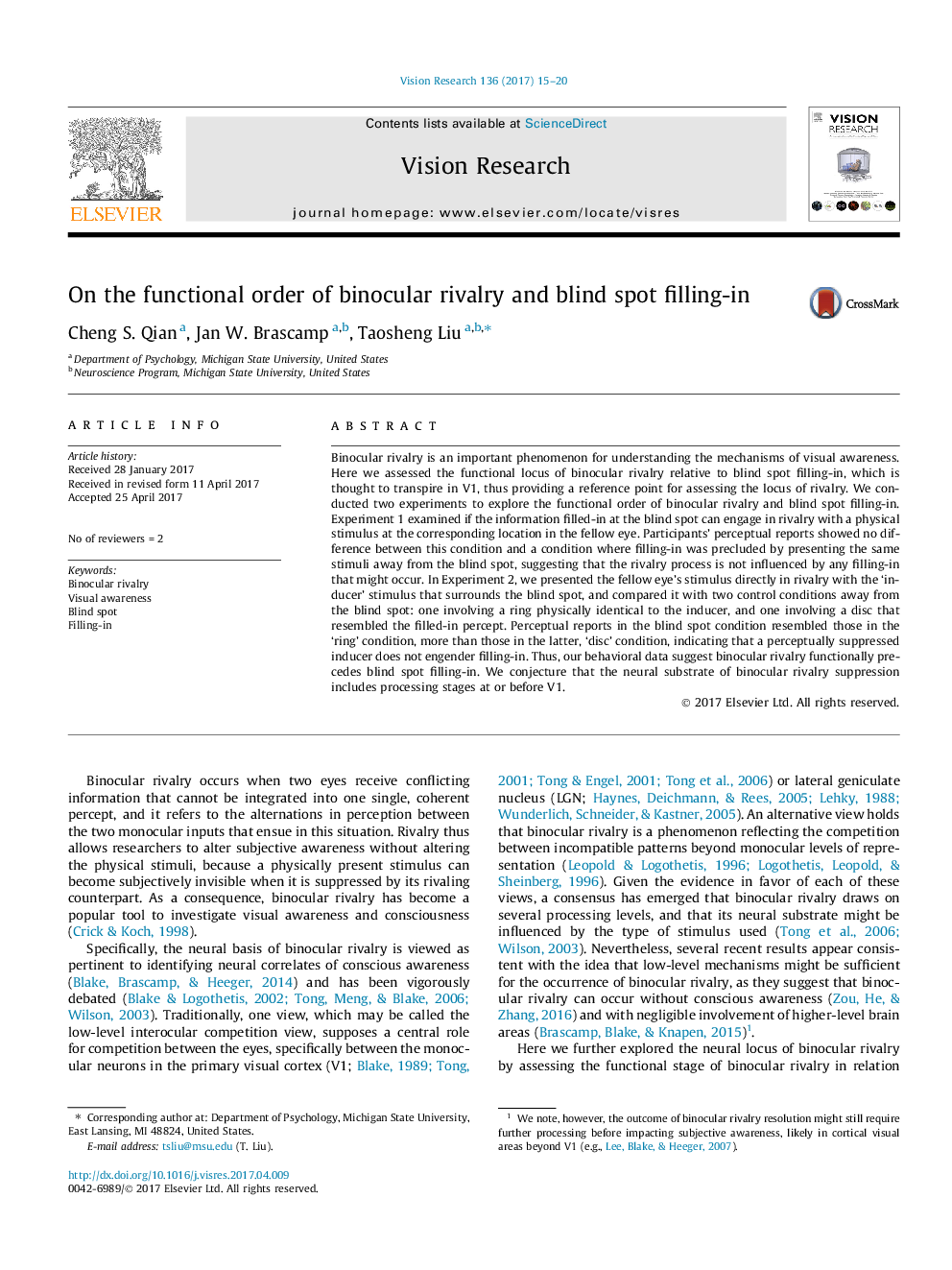| Article ID | Journal | Published Year | Pages | File Type |
|---|---|---|---|---|
| 5705856 | Vision Research | 2017 | 6 Pages |
Abstract
Binocular rivalry is an important phenomenon for understanding the mechanisms of visual awareness. Here we assessed the functional locus of binocular rivalry relative to blind spot filling-in, which is thought to transpire in V1, thus providing a reference point for assessing the locus of rivalry. We conducted two experiments to explore the functional order of binocular rivalry and blind spot filling-in. Experiment 1 examined if the information filled-in at the blind spot can engage in rivalry with a physical stimulus at the corresponding location in the fellow eye. Participants' perceptual reports showed no difference between this condition and a condition where filling-in was precluded by presenting the same stimuli away from the blind spot, suggesting that the rivalry process is not influenced by any filling-in that might occur. In Experiment 2, we presented the fellow eye's stimulus directly in rivalry with the 'inducer' stimulus that surrounds the blind spot, and compared it with two control conditions away from the blind spot: one involving a ring physically identical to the inducer, and one involving a disc that resembled the filled-in percept. Perceptual reports in the blind spot condition resembled those in the 'ring' condition, more than those in the latter, 'disc' condition, indicating that a perceptually suppressed inducer does not engender filling-in. Thus, our behavioral data suggest binocular rivalry functionally precedes blind spot filling-in. We conjecture that the neural substrate of binocular rivalry suppression includes processing stages at or before V1.
Related Topics
Life Sciences
Neuroscience
Sensory Systems
Authors
Cheng S. Qian, Jan W. Brascamp, Taosheng Liu,
